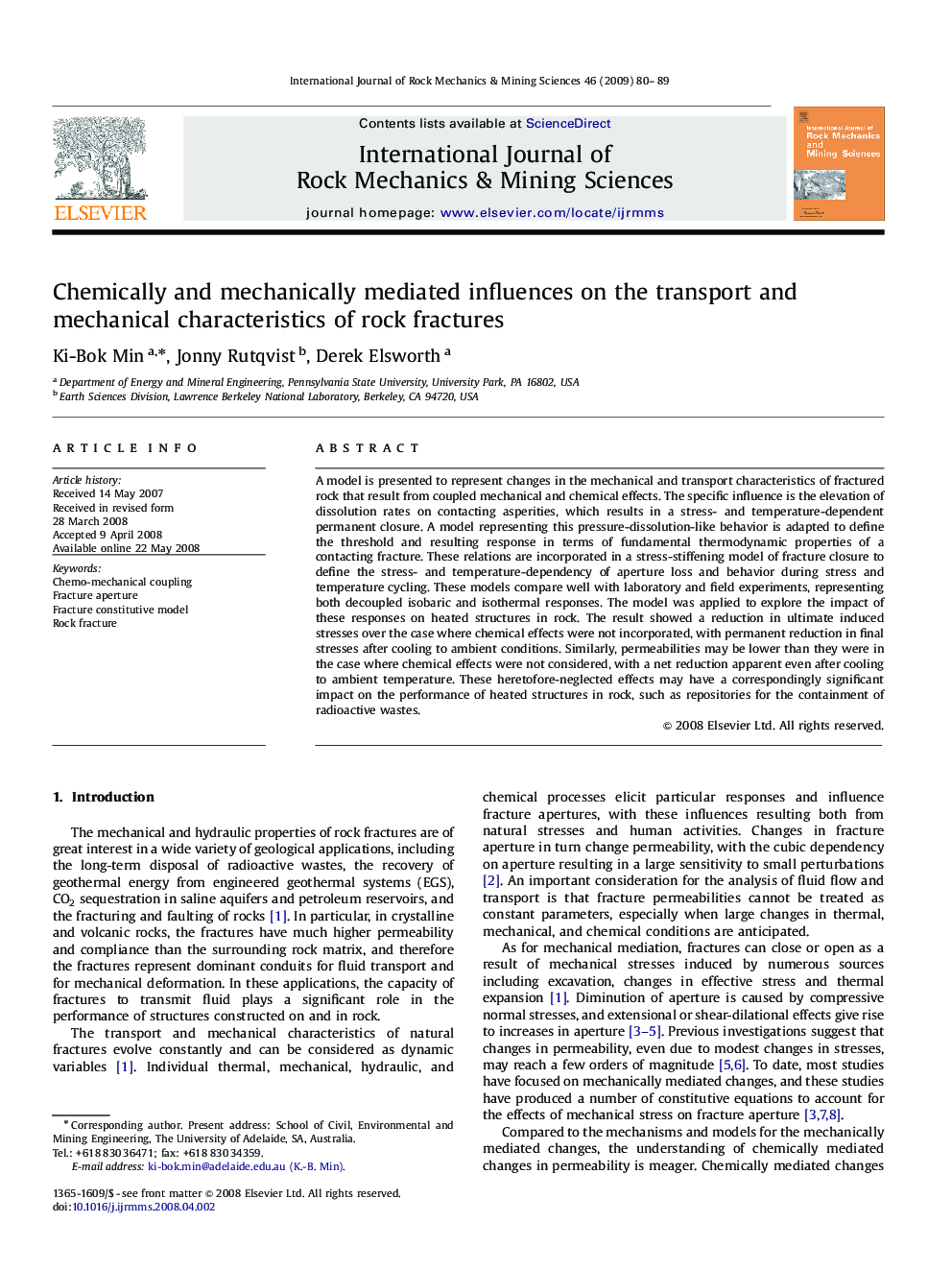| Article ID | Journal | Published Year | Pages | File Type |
|---|---|---|---|---|
| 810269 | International Journal of Rock Mechanics and Mining Sciences | 2009 | 10 Pages |
A model is presented to represent changes in the mechanical and transport characteristics of fractured rock that result from coupled mechanical and chemical effects. The specific influence is the elevation of dissolution rates on contacting asperities, which results in a stress- and temperature-dependent permanent closure. A model representing this pressure-dissolution-like behavior is adapted to define the threshold and resulting response in terms of fundamental thermodynamic properties of a contacting fracture. These relations are incorporated in a stress-stiffening model of fracture closure to define the stress- and temperature-dependency of aperture loss and behavior during stress and temperature cycling. These models compare well with laboratory and field experiments, representing both decoupled isobaric and isothermal responses. The model was applied to explore the impact of these responses on heated structures in rock. The result showed a reduction in ultimate induced stresses over the case where chemical effects were not incorporated, with permanent reduction in final stresses after cooling to ambient conditions. Similarly, permeabilities may be lower than they were in the case where chemical effects were not considered, with a net reduction apparent even after cooling to ambient temperature. These heretofore-neglected effects may have a correspondingly significant impact on the performance of heated structures in rock, such as repositories for the containment of radioactive wastes.
